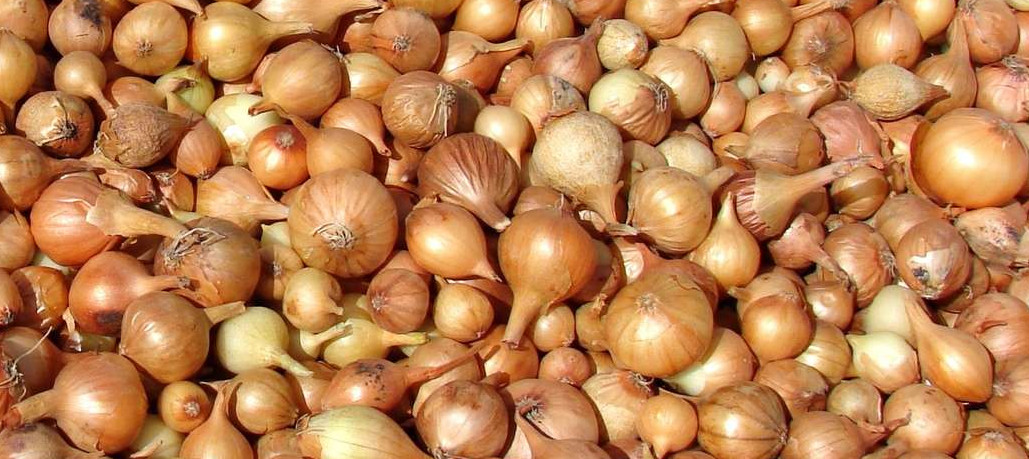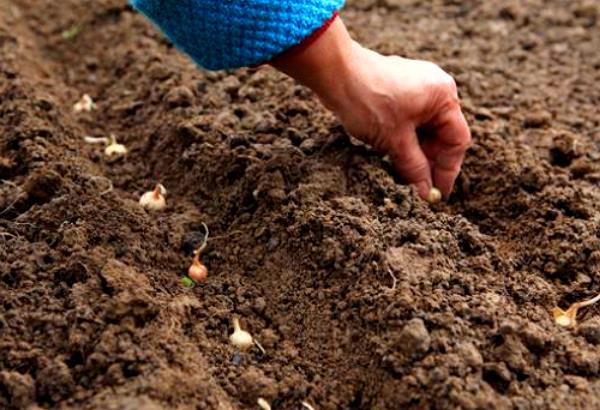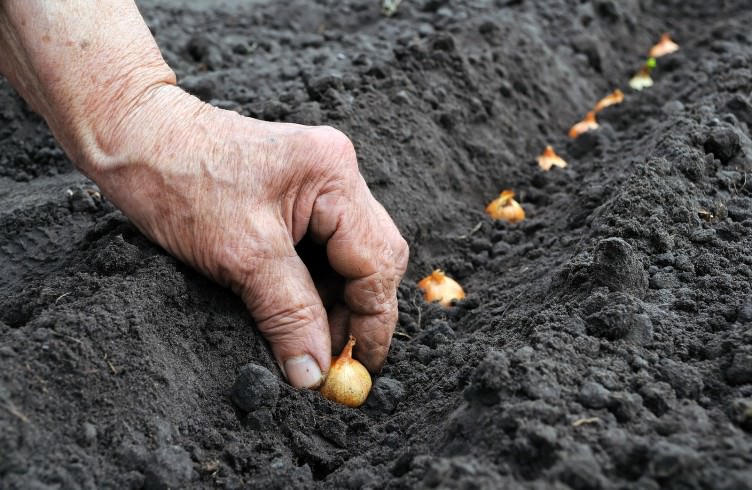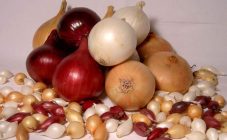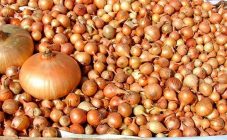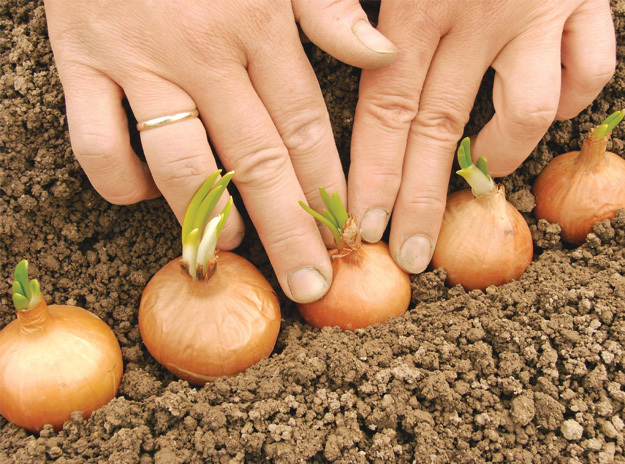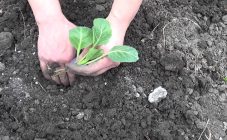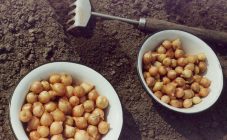Content:
In the harsh climate of Siberia, vegetable crops are quite fruitfully grown. One of them is onion, which grows in vegetable gardens, both for feathers and for turnips. Here it is important to know the exact timing of when to plant onion sets in Siberia for maximum harvest. It is recommended to carefully consider the choice of the variety and the cultivation technique.
Recommended onion varieties
In Siberia, perennial onions are often cultivated in vegetable gardens. This is very convenient given the climate of the region. The best time to plant these varieties is autumn. They winter well, even in harsh conditions, and already in spring they give a lot of greenery. Several turnips appear in each hole, they are dense, although not large. In one place, perennial varieties are left for 4 years, then the bulb is divided into parts and planted in another area.
Family onions are also planted in Siberia. It is named so because from one onion appears as if another "family" of little ones. Family onions are distinguished by higher taste qualities compared to turnips, and they also lack the characteristic bulbous smell.
Onion seedlings can be used to harvest in one season. There are varieties very well suited for this method, for example, Exibishen leeks.
It should be borne in mind that not every variety will survive in this climate. In cold conditions, it is not possible to get large bulbs from seeds, so this method of planting onion sets in spring in Siberia is very widespread.
Greenhouse varieties, for example, are completely unsuitable for open ground, they will only make a feather. But there are a large number of special varieties that are excellent for the climate of Siberia and give large yields: Yukont, Azerlos, Zolotnichok, Siberian annual, Black Prince, Lyubchik, Candy F1, Daytona F1.
When buying onions for planting, it is recommended to adhere to the following rules:
- the onions that have an oblong shape eventually grow into a round onion;
- round-shaped seed ends up producing flat fruits;
- it is better to choose medium-sized onions for planting - small ones may not germinate, and large ones often go to the arrow.
Agricultural technology of onion sevka in Siberia
The climate of this region has the following features:
- freezing;
- summer is cold enough with rains;
- temperature jumps;
- periods with dry and hot weather.
If you sow onions with seeds, then you get a larger amount of greenery, but more often they are planted with bulbs. When planting with seeds, the resulting onion sets are used the next year. The soil for planting is prepared in the fall. It is important to do this, otherwise you may be left without a crop.
The garden bed is carefully dug up and fertilizers are applied there. Their type depends on the desired result. Fertilizers should be mostly organic if desired. These are, for example, manure and chicken droppings. They are diluted 1:10 with water. In most cases, in Siberia, onion sets are grown for harvesting on a turnip. With this method, organic matter is not needed. But it is necessary to do phosphorus and potash fertilizing at the rate of 30 g per meter of sown area.
It is important to observe the crop rotation of the crops grown and to know exactly on which garden bed that has been planted over the past few years. Onions will grow and bear fruit best where cabbage, squash, or legumes were planted in the previous year. It is not recommended to plant it in the same place, you need to take a break of at least 4 years. Not the best predecessors for onions are carrots and garlic.
Landing dates
To understand when to plant onions in Siberia, you need to build on the local climatic conditions. It will be correct to plant it in spring or autumn. Most onion varieties cannot be stored normally in the harsh Siberian winter - they rot or germinate long before spring. Such a fate awaits mainly small turnips. It is recommended to plant them in October, closer to the middle. Before the onset of frost, they give several feathers, and in the spring this onion sets will grow well. Thus, the timing is approximately the same for all regions of Siberia, this should be guided by in order to understand when to plant onions in the Kuzbass region. Harvesting in the southern areas begins a little earlier.
However, planting of onions is usually practiced in Siberia in spring, so you can get a larger harvest. The earth should have time to warm up to about 8C in a layer up to 15 cm thick, then it is time to plant onion sets. This usually occurs between May 5-10. If sowing is done too early, the crop will produce many arrows and the bulb itself will not grow. This is convenient if you plan to eat a vegetable directly from the garden, because such an onion cannot be stored. Many gardeners use the lunar calendar to determine the timing of sowing, where specific dates are indicated. May is recommended for northern regions. The same calendar is used when harvesting.
If you are late with planting, the bulbs will grow small. This happens because the growth phase will occur during colder months, instead of warm summer days, and the bulb will not have time to gain a good size. That is why it is important to observe the exact dates for planting onion sets in Siberia and not to be late with sowing. Compliance with these rules allows many gardeners to successfully cultivate this crop and get large yields.
Preparing for planting
In the harsh climate of Siberia, an important factor is the correct preparation of the seed. Onion sets in this region often get sick, freeze out, but with good preliminary processing, many difficulties can be avoided.
First of all, the preparation consists in the fact that in the fall the onions need to be thoroughly dried. Seeds and bulbs are stored in large jars or rag bags in rooms with a temperature not lower than 0C and not higher than 2C. When the temperature rises, the turnip will not grow, and the onion will go into the arrow.
Several popular methods for preparing bulbs for planting:
- Put a couple of tablespoons of ordinary salt on half a bucket of water. The bulbs are soaked in this solution for a day. After that, the planting material is soaked in a weak solution of potassium permanganate for about 15 minutes. They are planted without drying;
- The onions are left to bask in water heated to 40C for about 9 hours. A little more, if necessary. The water must not cool down. After warming up, the bulbs are placed in a solution of potassium permanganate for 10 minutes. It is allowed to replace it with a solution of copper sulfate. Immediately before planting, treatment with growth-stimulating agents is possible;
- A faster way is to immerse the onion for a quarter of an hour in water heated to 55C, then immediately in cold water for the same time. Do not forget to treat with potassium permanganate before planting.
To avoid fungal damage to the bulbs, they must be dried for at least 20 days at temperatures close to 25C. Before planting in the ground, it is necessary to warm up the onion and disinfect it.
If a decision is made to sow onions with seeds, then they should be properly processed. A hardening procedure is carried out: heat is immersed in 50C water for a couple of minutes, then in cooled water for the same amount of time. After that, you need to soak the seeds in slightly warmed water for 24 hours, and in the second stage, leave them in the refrigerator for 2 days without removing them from the water. Before planting in the ground, disinfection with potassium permanganate and treatment with growth stimulants are needed.
Landing
The method of planting onions in the Siberian regions does not differ much, the most important thing is to meet the deadlines. The place should be sunny, well-lit and ventilated. For better onion growth, air should be opened to the plants. The bed must be dug to a depth of 15 cm, after which rows and holes are formed. Rows are made under the onion, maintaining an interval of 20 cm, and the gap between the bulbs should not exceed 10 cm. Fertilizers are applied at the rate of 30 g per square meter. Ash, potassium sulfate and superphosphate are used.
When planting seeds, the furrows should be 15 cm apart and the seeds themselves 2 cm apart. Seeds are laid 2 cm deep. Sowing dates are the same as for onion sets. But shoots should be expected not earlier than in three weeks. Grown for greens.
Onion care
At first, only watering is required, and when the first 4 leaves appear, top dressing is performed. Fertilizer for it is prepared as follows: water - 10 l, urea - 15 g, double superphosphate - 20 g, wood ash - 20 g. If necessary, the ash can be replaced with potassium salt in the same amount. For initial feeding, there is also a commercially available fertilizer of the combined type - nitrophoska.
A month later, the onions will need another feeding. It is recommended to use the following fertilizer: water - 10 l, double superphosphate - 20 g, potassium salt - 20 g. For this top dressing, you can also buy a combined fertilizer diammofosk. Organic fertilizers are not recommended for use, as large turnips will not grow. If the purpose of planting is greens, then composting is allowed. Timely care will help prevent diseases that onions are most susceptible to: powdery mildew, root rot.
Watering is done once or twice a week, but only in the first month. Also, do not forget about carefully loosening the soil and weeding. After that, 1 watering in a period of 2 weeks will be enough. In hot and dry summers, you will need to water a little more often. They stop moistening the soil a month before harvesting.
Dig the onions during the period when it does not rain and it is dry outside. Then you need to dry it for several days in the sun. When the bulbs are grown using seeds, they are stored in a cool, well-ventilated area until spring to be planted in the ground.
With a responsible attitude and proper care, even in the cold Siberian climate, it is possible to get record yields of vegetable crops.
